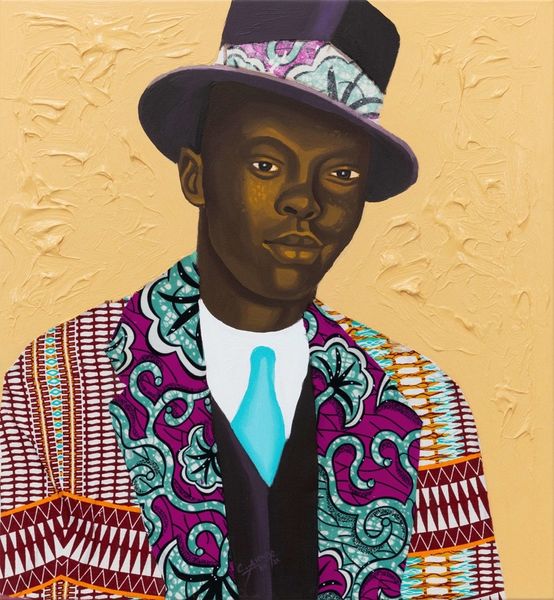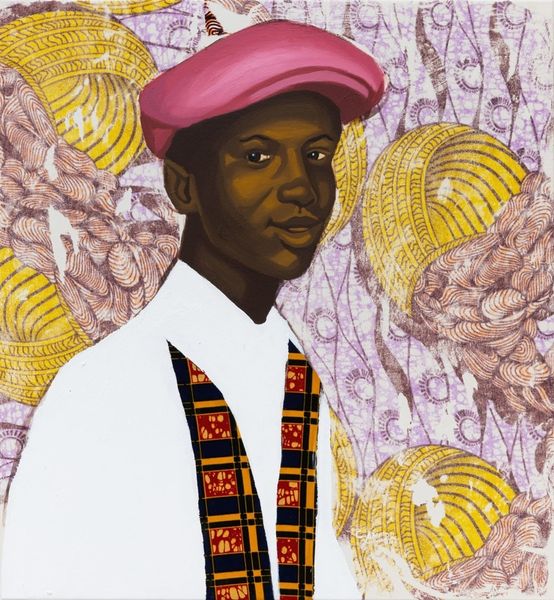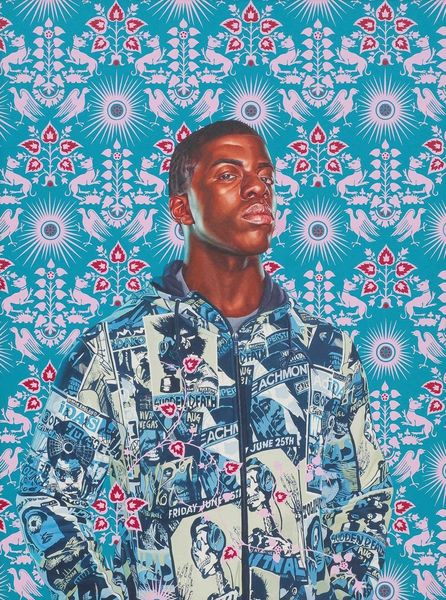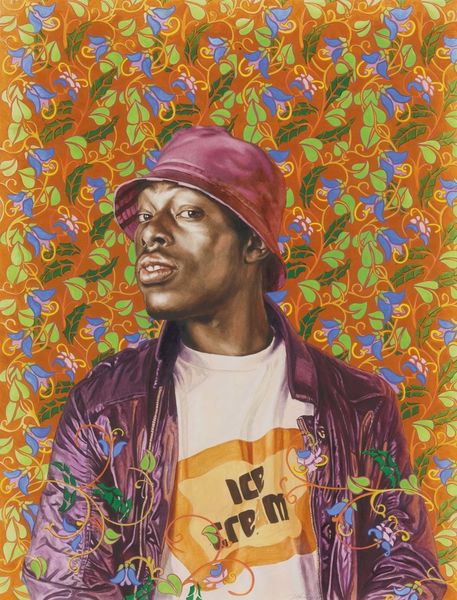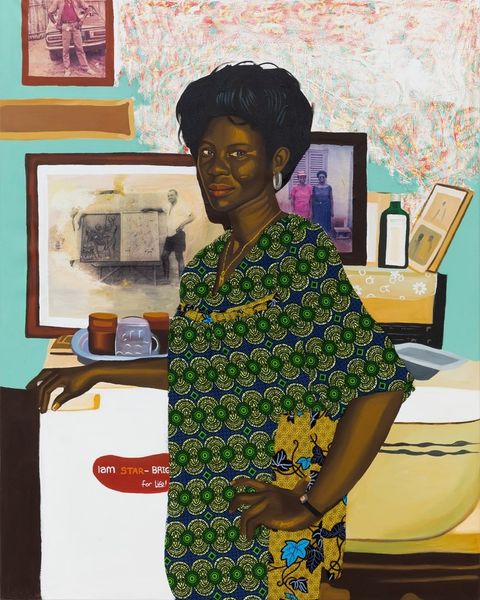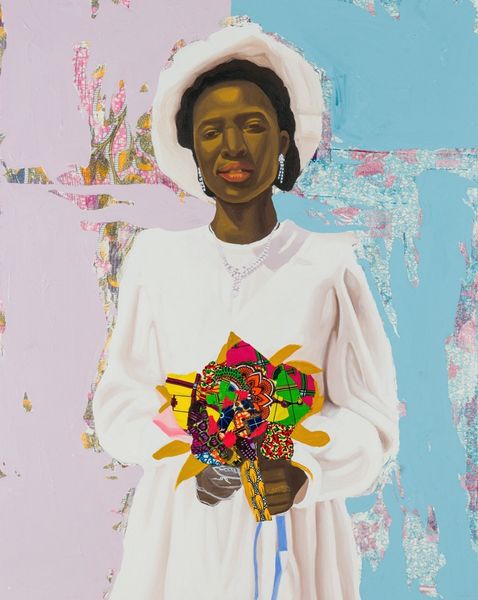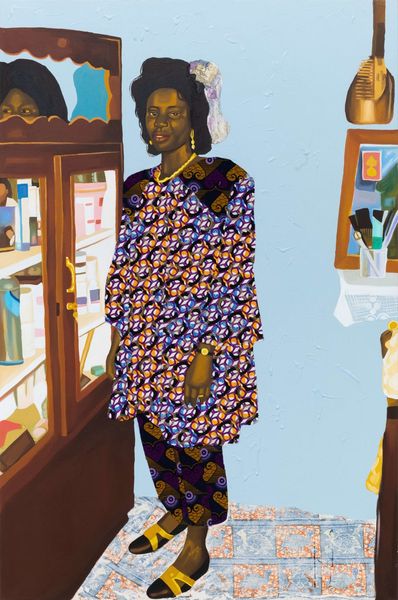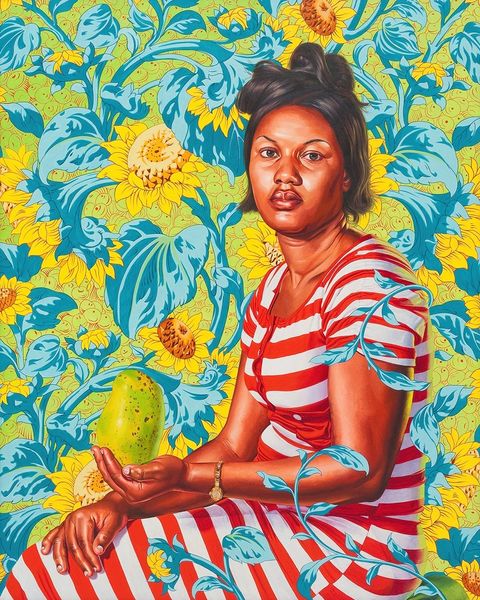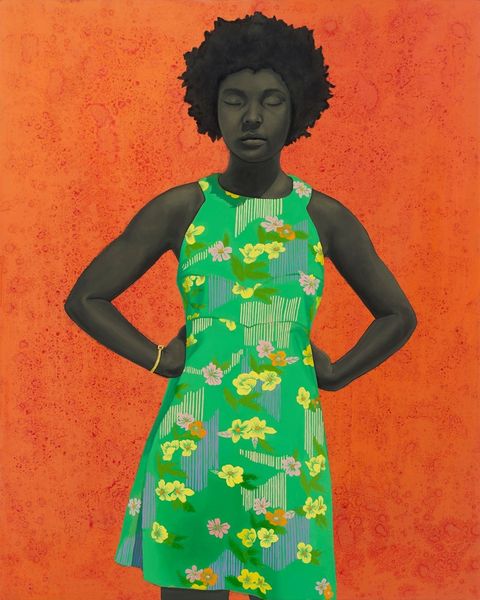
#
pattern-and-decoration
Copyright: Modern Artists: Artvee
Curator: Looking at Kehinde Wiley's "Thiogo Gliveira Do Rosario" from 2009, there's immediately this vibrant collision of the modern and the classical. I see echoes of historical portraiture filtered through a thoroughly contemporary lens. It's almost a deconstruction, really. Editor: That collision is literal, I think. The acrylic paint is smoothed over a canvas mimicking baroque styles and is grounded by an urban contemporary aesthetic through clothing, hat, and pose. Curator: Yes, exactly! It feels like Wiley's trying to engage with the weight of art history while playfully undermining its conventions. What do you make of the floral backdrop, those hypnotizing spirals? Editor: Well, it’s manufactured, right? Likely mass-produced textile or wallpaper, intentionally flattening the space, bringing "craft" into high art. We're looking at labor, production, maybe even consumption… it's like Wiley's saying, "Where does the art really lie?" Is it in the skill, the subject, or even in the industrial production behind the scenes? Curator: The model, Thiogo, feels almost heroic. Wiley often elevates his subjects like this. It's as if he's asking us to reconsider who gets memorialized in art, to challenge traditional power structures. He wants to empower Thiogo, place him into the lineage of those classical portraits that often excluded people of color. Editor: I see it. It's also worth thinking about accessibility here, it seems, like Thiogo becomes accessible by existing as the real subject that painting is built upon. There’s the labor of Kehinde as a well established art commodity producing artwork while we may assume that the backdrop's production is exploitative in a number of ways. Wiley plays with the consumption of all materials, including the image of a Black body. Curator: Precisely. I am very aware that Wiley offers us a dreamscape of Black identity… What stories can you find inside it? Editor: It's a complex material dreamscape, let's say, where silk screens meet Renaissance painting… The tension, though, lies in the materials used to portray this heroic vision. I'd want to explore those contradictions more deeply. Curator: Absolutely. It seems he offers this portrait to us not just as an image, but as an invitation to examine both its cultural context and its creation. Editor: Exactly, it makes one pause and reconsider how artists transform ordinary people into symbols and make money from their image in tandem.
Comments
No comments
Be the first to comment and join the conversation on the ultimate creative platform.
